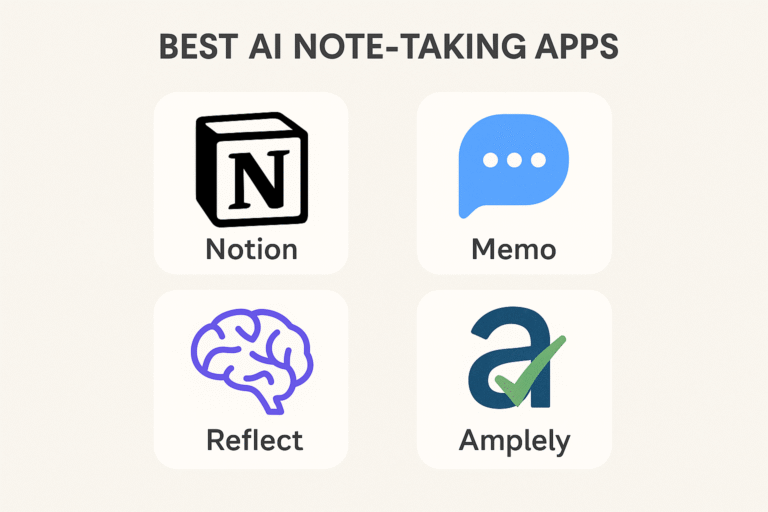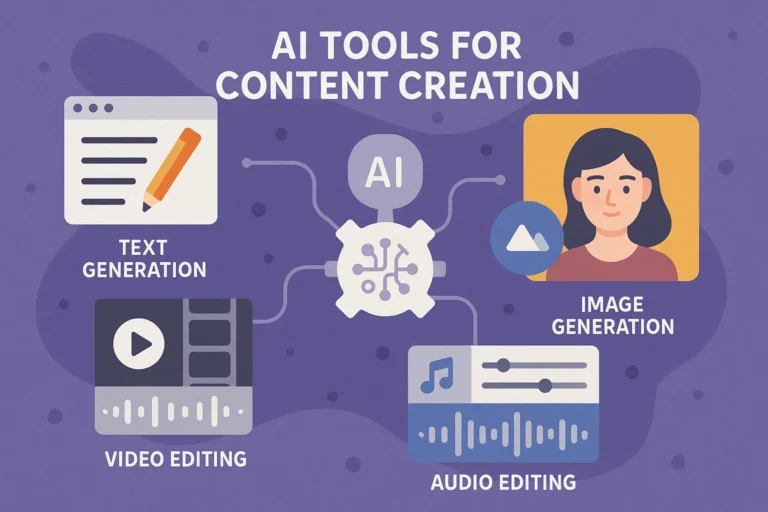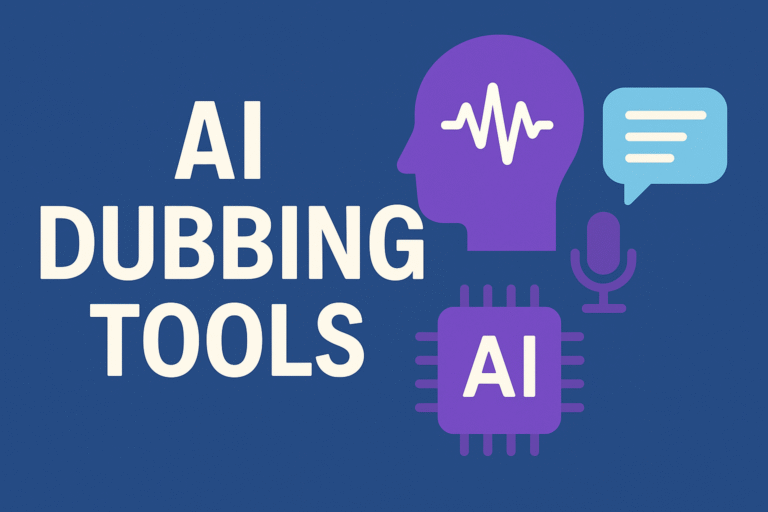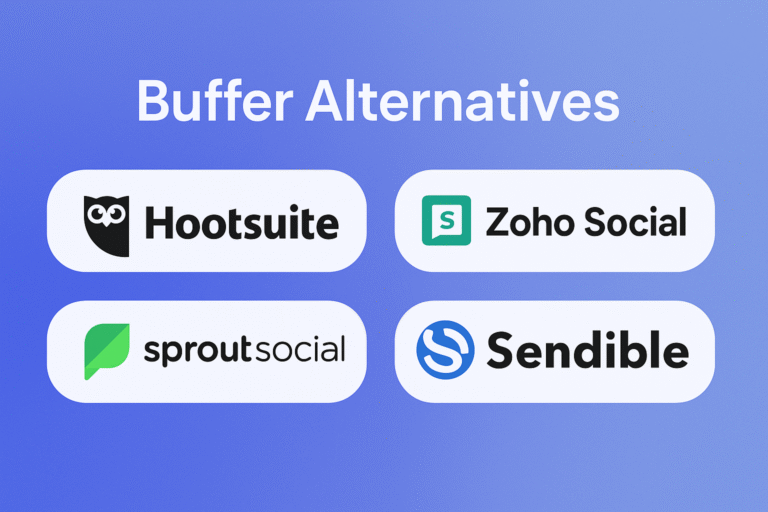You’ve spent months perfecting your website, optimizing every page, and crafting what you believe is the perfect marketing strategy. Then you discover your biggest competitor has been running ads you never knew existed, ranking for keywords you missed, and using content strategies that are light-years ahead of yours.
Here’s the uncomfortable truth: 89% of successful digital businesses regularly monitor their competitors, while struggling businesses focus only on their own efforts. The difference isn’t just knowledge—it’s actionable intelligence that transforms average campaigns into market-dominating strategies.
Whether you’re running affiliate niche sites, managing e-commerce operations, or building authority websites, understanding your competitive landscape isn’t optional anymore—it’s survival.
The good news? You don’t need a massive budget to gain these insights. We’ve compiled the most comprehensive list of free competitor analysis tools available in 2025, along with advanced strategies that most marketers never discover.
Why Competitor Analysis is Your Secret Weapon in 2025
The Changing Digital Landscape
The digital marketing world has evolved dramatically. What worked in 2023 might be completely irrelevant today. Algorithm updates, new platform features, and shifting consumer behaviors mean that staying current requires constant market intelligence.
Consider these statistics:
- Businesses using competitive intelligence are 58% more likely to exceed their growth targets
- 73% of successful content marketers attribute their success to understanding competitor content gaps
- Companies that regularly analyze competitor strategies see 40% better ROI on their marketing spend
Beyond Just “Spying” – Building Strategic Advantage
Smart competitor analysis isn’t about copying—it’s about:
- Identifying market gaps your competitors haven’t filled
- Understanding successful patterns you can adapt to your brand
- Avoiding costly mistakes others have already made
- Discovering profitable keywords and audiences that are underserved
- Benchmarking your performance against industry leaders
- Predicting market trends before they become obvious
The Complete Toolkit: 15 Free Competitor Analysis Tools
1. Google Ads Transparency Center – Your PPC Intelligence Hub
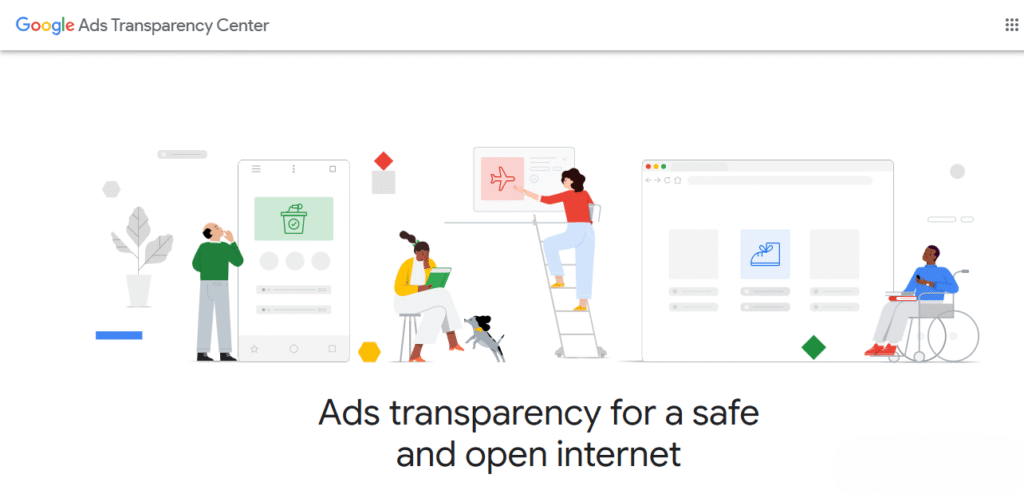
Google’s 2024 transparency initiative has given marketers unprecedented access to competitor advertising data across all Google properties.
What You Can Discover:
- Every active Google Ad from any advertiser
- Ad creative variations and testing patterns
- Seasonal campaign strategies and timing
- Cross-platform advertising approaches (Search, YouTube, Gmail, Display)
Advanced Use Cases:
- Track how competitors adjust messaging for different seasons
- Identify successful video ad formats for YouTube
- Analyze landing page strategies linked to specific ads
- Monitor brand positioning changes over time
Pro Tip: Set up weekly competitor monitoring sessions using this tool. Create a spreadsheet tracking competitor ad frequency, messaging themes, and seasonal patterns.
2. Meta Ads Library – Social Media Intelligence
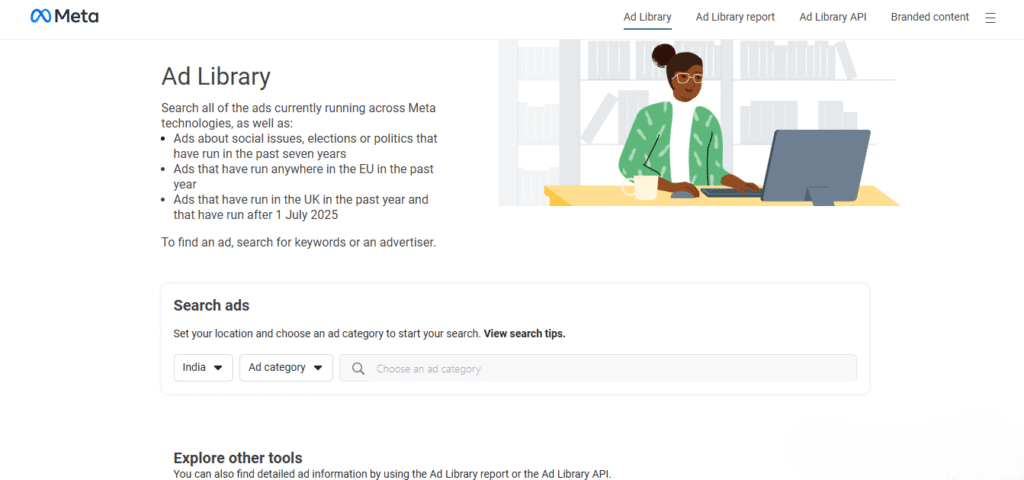
Meta’s transparency library is a goldmine for understanding social media advertising strategies across Facebook, Instagram, Messenger, and the Audience Network.
Advanced Features:
- Real-time active ad monitoring
- Geographic ad targeting insights
- Historical ad performance indicators
- Cross-platform creative analysis
Strategic Applications:
- Identify successful video vs. image ad performance patterns
- Analyze seasonal messaging and promotional strategies
- Understand geographic targeting approaches
- Monitor brand voice evolution across campaigns
3. TikTok Creative Center – Gen Z Market Intelligence
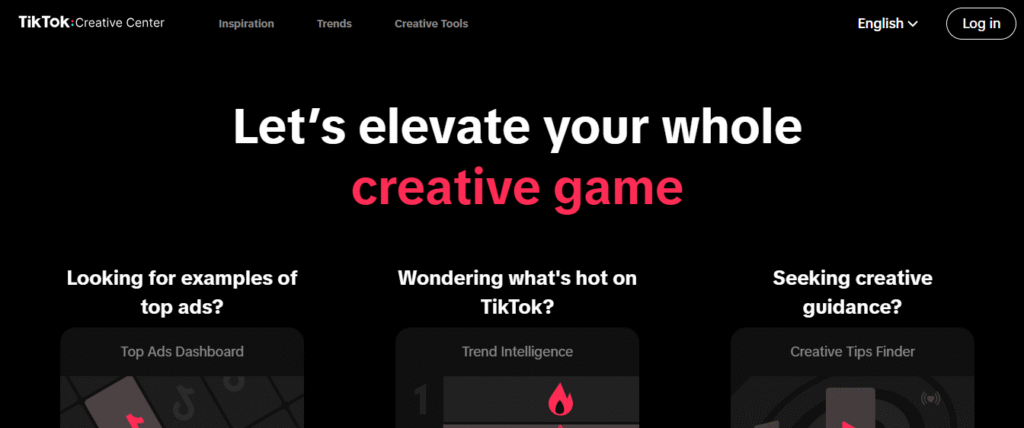
TikTok’s Creative Center has evolved into a sophisticated competitive analysis platform, especially crucial for businesses targeting younger demographics.
Unique Insights Available:
- Trending ad formats and styles
- Industry-specific creative performance data
- Music and audio trend analysis
- Hashtag performance tracking
How to Maximize It: Use the trending ads section to identify viral content patterns, then adapt these insights for your own campaigns while maintaining your brand voice.
4. SEMrush Free Version – SEO & PPC Combined Intelligence

Even SEMrush’s free tier provides substantial competitive insights that many marketers never fully exploit.
Hidden Free Features:
- Competitor keyword gap analysis (limited)
- Backlink profile comparisons
- Content gap identification
- Basic traffic analytics
- Ad copy and landing page previews
Power User Strategy: Rotate through multiple competitor domains weekly to maximize your free report limits. Focus on your top 3-5 competitors rather than trying to analyze everyone.
5. Ahrefs Webmaster Tools – Backlink Intelligence

While Ahrefs is premium, their Webmaster Tools are completely free and offer incredible competitive insights.
What You Get:
- Detailed backlink analysis for any verified site
- Keyword ranking data
- Content performance metrics
- Technical SEO insights
Smart Application: Verify your own site to access the dashboard, then use the free features to analyze competitor content that’s ranking well in your niche.
6. Ubersuggest Free Tier – Neil Patel’s Competitor Insights

Ubersuggest’s free version provides substantial competitive intelligence, particularly strong for content marketing analysis.
Key Features:
- Top-performing competitor content analysis
- Keyword difficulty and opportunity identification
- Basic traffic and engagement estimates
- Content idea generation based on competitor gaps
7. SpyFu Free Preview – PPC Historical Data
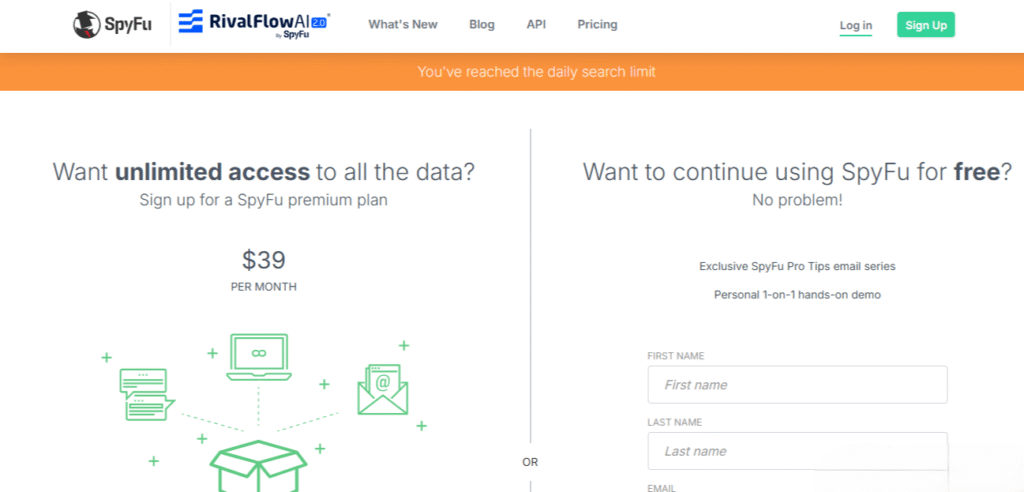
SpyFu’s free preview offers historical PPC data that most tools charge premium prices for.
Unique Advantages:
- Years of historical keyword and ad data
- Competitor ad copy evolution tracking
- Budget estimate insights
- Successful keyword identification over time
8. SimilarWeb Free Analysis – Traffic Intelligence

SimilarWeb excels at providing traffic source breakdowns and marketing channel analysis.
Competitive Intelligence Features:
- Traffic source distribution (organic, paid, social, referral)
- Geographic traffic patterns
- Audience interest insights
- Mobile vs. desktop usage patterns
9. BuzzSumo Free Tier – Content Performance Analysis
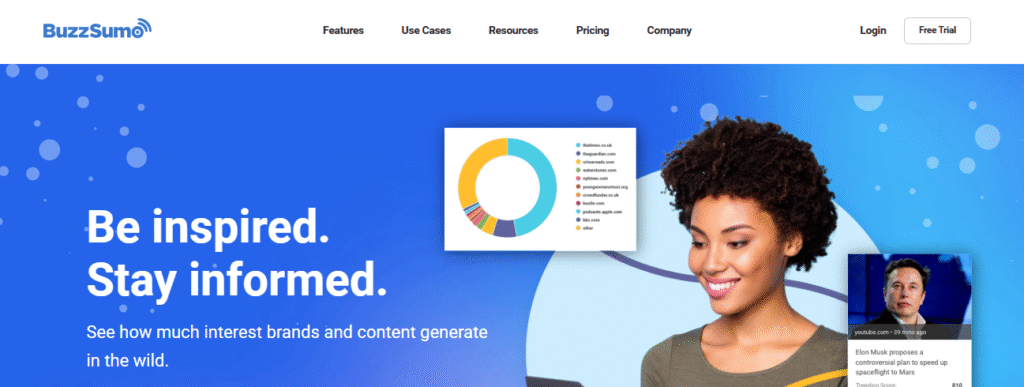
BuzzSumo’s free version helps you understand what content resonates in your industry.
Analysis Capabilities:
- Most shared content by topic or competitor
- Content format performance (videos, infographics, articles)
- Social media engagement patterns
- Influencer identification and outreach opportunities
10. Moz Link Explorer Free – Authority Analysis

Moz offers free domain authority insights that help you understand competitive positioning.
Competitive Metrics:
- Domain Authority comparisons
- Page Authority for specific competing pages
- Basic backlink profile analysis
- Spam score assessment
11. Google Trends – Market Intelligence
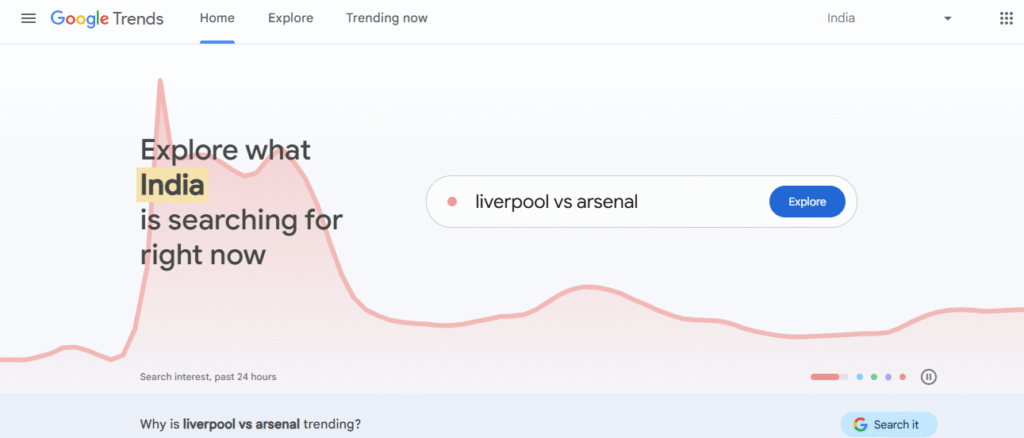
Often overlooked, Google Trends provides crucial competitive and market intelligence completely free.
Advanced Applications:
- Compare competitor brand awareness over time
- Identify seasonal opportunities competitors miss
- Understand geographic market penetration
- Track industry trend adoption rates
12. Wayback Machine – Strategic Evolution Analysis
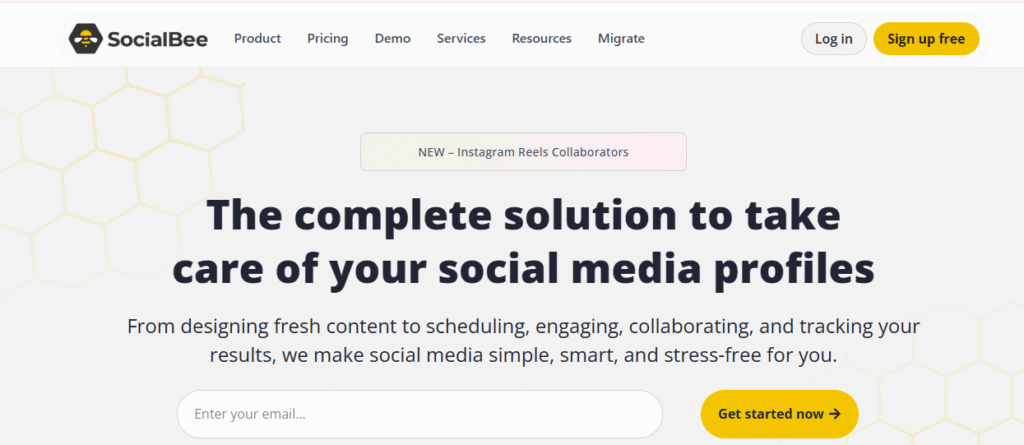
Archive.org’s Wayback Machine offers historical competitor analysis that reveals strategic evolution patterns.
Competitive Research Uses:
- Track website design and UX evolution
- Identify successful conversion optimization tests
- Analyze content strategy changes over time
- Understand positioning and messaging evolution
13. LinkedIn Sales Navigator Free Trial – B2B Intelligence
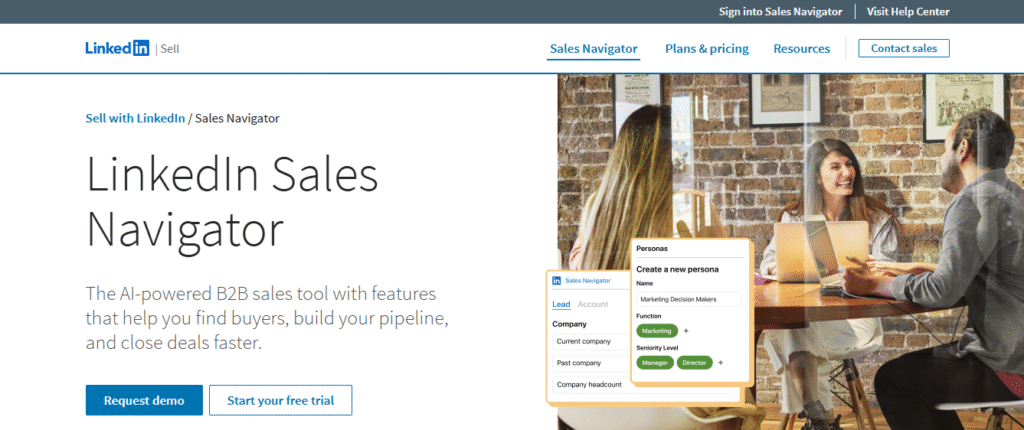
For B2B competitor analysis, LinkedIn Sales Navigator’s free trial provides unmatched insights.
B2B Competitive Features:
- Employee growth and hiring patterns
- Company update and content strategies
- Industry positioning and thought leadership approaches
- Network and partnership analysis
14. Screaming Frog SEO Spider Free – Technical Competitive Analysis
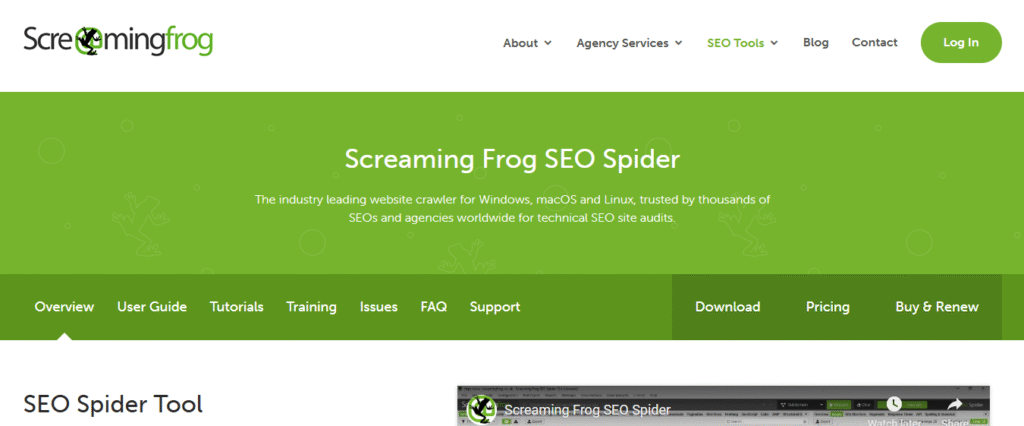
Screaming Frog’s free version (500 URLs) allows deep technical analysis of competitor sites.
Technical Intelligence:
- Site structure and architecture analysis
- Meta tag and content optimization patterns
- Internal linking strategies
- Technical SEO implementation insights
15. Social Blade – Social Media Performance Tracking

Social Blade provides historical social media growth data for competitors across multiple platforms.
Social Intelligence Features:
- Growth rate analysis across platforms
- Content posting frequency insights
- Engagement rate trends
- Audience growth patterns
Advanced Competitor Analysis Strategies
Creating Your Competitive Intelligence Dashboard
Most marketers collect competitive data but fail to organize it strategically. Here’s how to build a system that actually drives decisions:
Monthly Competitor Scorecard: Create a simple tracking system that monitors:
- Keyword ranking changes for your top 10 target keywords
- New content publication frequency and topics
- Social media engagement rates and growth
- Ad spend estimates and creative variations
- Technical improvements and site changes
The 3-Layer Analysis Framework
Layer 1: Surface Intelligence (Weekly) Quick checks using tools like Meta Ads Library and Google Ads Transparency Center to stay current on active campaigns.
Layer 2: Strategic Intelligence (Monthly) Deeper analysis using SEMrush, Ahrefs Webmaster Tools, and BuzzSumo to understand content strategies and SEO approaches.
Layer 3: Predictive Intelligence (Quarterly) Historical trend analysis using Google Trends, Wayback Machine, and Social Blade to predict future competitor moves.
Turning Intelligence into Action
The most successful businesses don’t just collect competitive data—they systematically convert insights into strategic advantages:
Content Gap Exploitation When you identify topics your competitors aren’t covering, that’s your opportunity to capture market share. This is particularly valuable for niche website development where finding untapped keyword opportunities can be incredibly profitable.
Creative Innovation Use competitor ad analysis to identify successful patterns, then innovate beyond them. Don’t copy—evolve and improve.
Strategic Positioning Understanding competitor messaging helps you identify unique positioning opportunities that differentiate your brand.
Industry-Specific Competitor Analysis Strategies
For E-commerce Businesses
If you’re running online stores or considering e-commerce website development, focus on:
Product and Pricing Intelligence:
- Monitor competitor product launches and discontinuations
- Track pricing strategies and promotional patterns
- Analyze product description and category optimization
- Study checkout flow and conversion optimization approaches
Recommended Tool Combination: SimilarWeb + Meta Ads Library + SEMrush free tier
For Affiliate Marketers
For those managing affiliate sites or considering Amazon Associates programs, prioritize:
Content and Monetization Analysis:
- Identify profitable product niches competitors are targeting
- Analyze content monetization strategies and affiliate link placement
- Monitor seasonal content and promotional strategies
- Track ranking competition for high-value commercial keywords
Recommended Tool Combination: Ahrefs Webmaster Tools + BuzzSumo + Google Trends
For Local Businesses
If you’re developing small business websites, focus on:
Local Market Intelligence:
- Monitor local competitor Google My Business optimization
- Track local keyword ranking strategies
- Analyze local content marketing approaches
- Study local social media engagement patterns
Recommended Tool Combination: Google Trends (local) + Meta Ads Library (location-filtered) + Manual local search analysis
Common Competitive Analysis Mistakes to Avoid
1. Analysis Paralysis
Don’t get stuck endlessly researching. Set specific research goals and timelines. Spend 80% of your time implementing insights and only 20% gathering them.
2. Copying Instead of Innovating
The goal isn’t to become a cheap copy of your competitors. Use their successful elements as inspiration for your own unique approach.
3. Focusing Only on Direct Competitors
Look beyond obvious competitors. Sometimes the best insights come from successful businesses in adjacent industries or markets.
4. Ignoring Small Competitors
Don’t only analyze market leaders. Smaller, agile competitors often pioneer innovative strategies that larger companies later adopt.
5. One-Time Analysis
Competitive intelligence should be ongoing, not a one-time project. Markets evolve rapidly, and yesterday’s insights may be irrelevant today.
Building Your Competitive Advantage
Developing Your Unique Market Position
Understanding competitors helps you identify white space in the market. Here’s how to find and exploit these opportunities:
The Gap Analysis Process:
- Content Gaps: What topics are competitors missing?
- Audience Gaps: What demographics are underserved?
- Platform Gaps: What channels are competitors neglecting?
- Feature Gaps: What functionality or services could differentiate you?
Creating Superior Solutions
Once you’ve identified gaps, the next step is building solutions that don’t just match competitors—they exceed them:
Content Superiority Strategy:
- Create more comprehensive resources than competitors offer
- Provide better user experience and site performance
- Offer unique insights or data competitors can’t access
- Build stronger community and engagement features
This approach has been central to Upniche’s success in developing high-performing niche sites that consistently outrank competitors by providing superior value and user experience.
Advanced Tactics for Power Users
Reverse Engineering Successful Campaigns
The AIDA Analysis Method: For every successful competitor campaign you discover:
- Attention: How do they capture initial interest?
- Interest: What keeps people engaged?
- Desire: How do they build want for their solution?
- Action: What specific steps do they guide users toward?
Seasonal Pattern Recognition
Many businesses miss seasonal opportunities because they don’t track competitor patterns over time:
Create a Seasonal Intelligence Calendar:
- Monitor when competitors increase ad spend
- Track seasonal content themes and topics
- Identify promotional timing and messaging patterns
- Note seasonal design and creative changes
Geographic Expansion Intelligence
Use competitor analysis to identify expansion opportunities:
- Which markets are competitors entering or abandoning?
- What localization strategies are working in different regions?
- Where are there underserved geographic opportunities?
Tools Integration for Maximum Impact
Building Your Free Analysis Stack
Daily Monitoring Setup:
- Google Alerts for competitor brand mentions
- Social media platform monitoring for new campaigns
- Google Ads Transparency Center for new ad launches
Weekly Deep Dives:
- SEMrush keyword and traffic analysis
- Meta Ads Library creative research
- Content performance analysis via BuzzSumo
Monthly Strategic Reviews:
- Comprehensive traffic and ranking comparisons
- Backlink profile evolution analysis
- Social media growth and engagement tracking
Automating Your Competitive Intelligence
Create Automated Reporting:
- Set up Google Alerts for competitor news and mentions
- Use IFTTT or Zapier to automate data collection where possible
- Schedule regular competitive analysis sessions in your calendar
- Create standardized reporting templates for consistent tracking
Converting Intelligence into Growth
Content Strategy Enhancement
Use competitive insights to enhance your content approach:
Topic Identification: When competitors consistently create content around specific themes, it indicates proven audience interest. However, look for angles they’re missing or ways to provide superior value.
Format Innovation: If competitors are succeeding with blog posts, consider creating more comprehensive guides, interactive tools, or video content that provides superior user experience.
SEO Opportunity Discovery: Competitor analysis often reveals keyword opportunities they’re ranking for that you’re not targeting, or gaps where no one is creating comprehensive content.
Conversion Optimization Insights
Landing Page Intelligence: Study competitor landing pages to understand:
- What headlines and value propositions they test
- How they structure their conversion funnels
- What trust signals and social proof they emphasize
- How they handle objections and concerns
User Experience Benchmarking: Compare your site experience to competitors:
- Page load speeds and technical performance
- Mobile optimization and responsive design
- Navigation structure and user flow
- Conversion path complexity
This analysis often reveals opportunities for website optimization or technical improvements that can provide competitive advantages.
Industry-Specific Intelligence Strategies
SaaS and Technology Companies
Focus Areas:
- Feature comparison and positioning analysis
- Pricing strategy evolution tracking
- Customer acquisition channel diversity
- Content marketing sophistication levels
Key Metrics to Track:
- Trial-to-paid conversion optimization strategies
- Onboarding flow improvements
- Customer success content approaches
- Technical documentation quality and completeness
E-commerce and Retail
Focus Areas:
- Product catalog optimization strategies
- Seasonal promotional patterns and timing
- Customer review and social proof strategies
- Cross-selling and upselling techniques
Key Metrics to Track:
- Product page optimization approaches
- Checkout flow and conversion optimization
- Customer retention and email marketing strategies
- Social commerce integration and effectiveness
Service-Based Businesses
Focus Areas:
- Service packaging and positioning strategies
- Trust-building and credibility approaches
- Client acquisition and nurturing processes
- Pricing strategy and value communication
Key Metrics to Track:
- Lead generation and conversion strategies
- Client onboarding and experience optimization
- Case study and testimonial utilization
- Geographic expansion and localization approaches
Building Your Competitive Analysis Workflow
The 30-Day Competitive Intelligence Challenge
Week 1: Foundation Building
- Identify your top 10 competitors (direct and indirect)
- Set up accounts for all free tools mentioned
- Create your competitive tracking spreadsheet
- Conduct initial baseline analysis
Week 2: Deep Content Analysis
- Analyze competitor content strategies using BuzzSumo and SEMrush
- Identify content gaps and opportunities
- Study competitor SEO approaches and keyword strategies
- Analyze social media content performance patterns
Week 3: Advertising and Promotion Intelligence
- Monitor competitor ad campaigns across all platforms
- Analyze creative strategies and messaging approaches
- Track promotional timing and seasonal patterns
- Study landing page and conversion strategies
Week 4: Strategic Planning and Implementation
- Synthesize insights into actionable strategies
- Develop content and campaign plans based on discoveries
- Create monitoring systems for ongoing intelligence
- Plan implementation of your competitive advantages
Creating Your Competitive Intelligence Dashboard
Essential Metrics to Track:
- Keyword ranking changes (yours vs. competitors)
- Traffic growth rates and patterns
- Social media growth and engagement rates
- Ad spend estimates and campaign frequency
- Content publication frequency and performance
- Technical site improvements and innovations
Reporting Frequency:
- Daily: Ad campaign monitoring for immediate response opportunities
- Weekly: Content and social media performance tracking
- Monthly: Comprehensive ranking and traffic analysis
- Quarterly: Strategic positioning and market share assessment
Advanced Competitive Intelligence Techniques
Reverse Engineering Success
The Content Archaeology Method: When you find highly successful competitor content:
- Analyze the keyword strategy and search intent targeting
- Study the content structure and user experience design
- Identify unique data, insights, or perspectives provided
- Examine the promotion and distribution strategy
- Understand the conversion and monetization approach
Predictive Competitive Analysis
Trend Forecasting Techniques:
- Monitor competitor hiring patterns (LinkedIn)
- Track patent filings and technical innovations
- Analyze partnership announcements and strategic moves
- Study investor relations communications for strategic insights
Cross-Industry Intelligence
Learning from Adjacent Markets: Don’t limit analysis to direct competitors. Often, the most innovative strategies come from successful businesses in related industries. For example, e-commerce conversion techniques might apply to service-based businesses, or SaaS onboarding strategies might improve affiliate site user experience.
Legal and Ethical Considerations
Staying Within Legal Boundaries
What’s Acceptable:
- Analyzing publicly available advertising and content
- Studying publicly accessible website features and functionality
- Monitoring public social media activities and content
- Using publicly available tools and databases
What to Avoid:
- Accessing private or proprietary information
- Misrepresenting yourself to gain access to competitor information
- Directly copying copyrighted content or creative materials
- Violating terms of service of analysis tools or platforms
Building Ethical Competitive Practices
Best Practices:
- Focus on improving your own value proposition rather than undermining competitors
- Use insights to innovate and provide better customer value
- Respect intellectual property and creative rights
- Maintain professional standards in how you discuss and reference competitors
Maximizing ROI from Competitive Intelligence
Cost-Benefit Analysis of Free vs. Paid Tools
While this guide focuses on free tools, understanding when to upgrade is crucial:
When Free Tools Are Sufficient:
- Small businesses or solo operators with limited budgets
- Early-stage market research and opportunity identification
- Basic competitive monitoring and awareness
- Seasonal or project-based analysis needs
When to Consider Paid Upgrades:
- Managing multiple client campaigns or large-scale operations
- Need for historical data and trend analysis
- Requirement for advanced automation and reporting
- Integration with existing marketing technology stacks
Measuring Your Competitive Intelligence Impact
Track These Success Metrics:
- Improved Campaign Performance: Better CTR, conversion rates, and ROI after implementing competitive insights
- Faster Market Response: Reduced time to identify and respond to market opportunities
- Enhanced Strategic Planning: More accurate forecasting and goal setting
- Competitive Positioning: Market share growth and improved brand positioning
Integration with Your Overall Marketing Strategy
Aligning Competitive Intelligence with Business Goals
Strategic Integration Points:
- Product Development: Use competitor analysis to identify feature gaps and innovation opportunities
- Content Marketing: Develop content strategies that address gaps in competitor coverage
- SEO Strategy: Target keyword opportunities competitors are missing or underoptimizing
- Paid Advertising: Optimize ad spend based on competitor performance insights
- Customer Experience: Improve user experience based on competitor strengths and weaknesses
Building Competitive Advantages
Sustainable Differentiation Strategies: Rather than simply matching competitor tactics, use intelligence to build lasting advantages:
Technical Excellence: If competitors have slow websites, focus on performance optimization. If you need technical improvements, consider professional WordPress optimization or error resolution services.
Content Superiority: Create more comprehensive, valuable content than competitors offer. This is particularly important for affiliate marketing success where content quality directly impacts conversions.
User Experience Innovation: Use competitor analysis to identify UX improvements that provide genuine value to users.
The Future of Competitive Analysis
Emerging Trends in 2025
AI-Powered Intelligence: New tools are beginning to use artificial intelligence to automatically identify patterns and opportunities in competitive data.
Real-Time Adaptation: Advanced systems now allow for automatic campaign adjustments based on competitor activities.
Cross-Platform Integration: Better tools are emerging that combine insights from multiple platforms and channels into unified competitive intelligence.
Predictive Analytics: Some platforms now attempt to predict competitor moves based on historical patterns and market conditions.
Preparing for 2026 and Beyond
Skills to Develop:
- Advanced data analysis and pattern recognition
- Cross-platform marketing strategy development
- Predictive modeling and trend forecasting
- Automated system setup and management
Technologies to Watch:
- Machine learning-powered competitive analysis tools
- Automated competitive response systems
- Advanced social listening and sentiment analysis
- Integrated business intelligence platforms
Your Next Steps: Building Competitive Advantage Today
Immediate Action Plan
This Week:
- Set up accounts for the 5 most relevant tools from this list
- Conduct initial competitive analysis for your top 3 competitors
- Identify your biggest competitive intelligence gaps
- Create your competitive monitoring schedule
This Month:
- Implement insights from your initial analysis
- Develop ongoing competitive intelligence workflows
- Create your competitive advantage strategies
- Begin tracking performance improvements
This Quarter:
- Refine your competitive intelligence processes
- Expand analysis to include indirect competitors
- Develop predictive capabilities based on historical data
- Scale successful competitive strategies across your business
Getting Professional Support
While these free tools provide substantial capabilities, sometimes you need expert implementation to maximize their value. Whether you’re looking to build new niche websites that outperform competitors, need professional website development that incorporates competitive advantages, or require technical optimization to match competitor performance, having the right partner ensures your competitive intelligence translates into real business results.
The landscape of digital marketing continues to evolve rapidly. Businesses that consistently monitor, analyze, and adapt based on competitive intelligence will always have advantages over those operating in isolation.
Conclusion: Your Competitive Edge Starts Now
In 2025’s hyper-competitive digital landscape, flying blind isn’t just risky—it’s business suicide. The free tools and strategies outlined in this guide provide everything you need to build comprehensive competitive intelligence that drives real business growth.
Remember, the goal isn’t to become a copycat—it’s to become so aware of your competitive landscape that you can consistently make smarter, more informed decisions. Whether you’re identifying content gaps, discovering advertising opportunities, or finding technical improvements that set you apart, competitive intelligence should inform every aspect of your digital strategy.
Start with just 2-3 tools from this list. Spend 30 minutes per week on competitive analysis. Track your insights systematically. Most importantly, act on what you discover.
Your competitors are already watching the market. The question is: will you be watching them?
Frequently Asked Questions
Are these competitor analysis tools really completely free?
Yes, all the tools mentioned offer significant free functionality. While many have paid upgrades, their free tiers provide substantial value for competitive analysis. Some tools like Meta Ads Library and Google Ads Transparency Center are completely free with no limitations.
Is it legal to analyze competitor advertising and marketing strategies?
Absolutely. All the analysis methods described use publicly available information that companies choose to display. Platforms like Facebook and Google are required to make advertising transparent, and analyzing this public information is both legal and standard business practice.
How often should I conduct competitive analysis?
For most businesses, weekly monitoring of immediate competitors combined with monthly deep-dive analysis provides the right balance. High-velocity industries or seasonal businesses may need more frequent analysis, while stable markets might require less frequent but more thorough quarterly reviews.
Can I use these insights to improve my existing website or should I start fresh?
In most cases, you can significantly improve existing websites using competitive insights. Focus on identifying the biggest gaps between your current approach and successful competitor strategies. However, if analysis reveals fundamental structural or strategic issues, sometimes a fresh start is more efficient.
What should I do if competitors are significantly outperforming me in every area?
Don’t panic. Focus on identifying 1-2 areas where you can realistically compete or differentiate. Sometimes being significantly smaller allows for more agile testing and innovation. Consider focusing on underserved niches or audience segments that larger competitors might be overlooking.
How do I know which competitor insights are worth implementing?
Prioritize insights based on three factors: potential impact on your business goals, feasibility with your current resources, and alignment with your brand and customer base. Test small-scale implementations before major strategic changes, and always adapt competitor strategies to fit your unique value proposition.
Should I focus on direct competitors or include indirect ones in my analysis?
Include both. Direct competitors show you what’s working in your exact space, while indirect competitors (companies targeting similar audiences with different solutions) often reveal innovative approaches you can adapt. A 70/30 split between direct and indirect competitor analysis usually provides the best insights.


